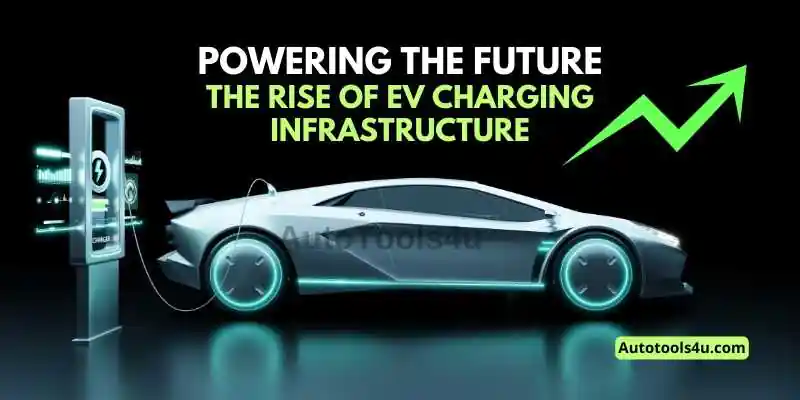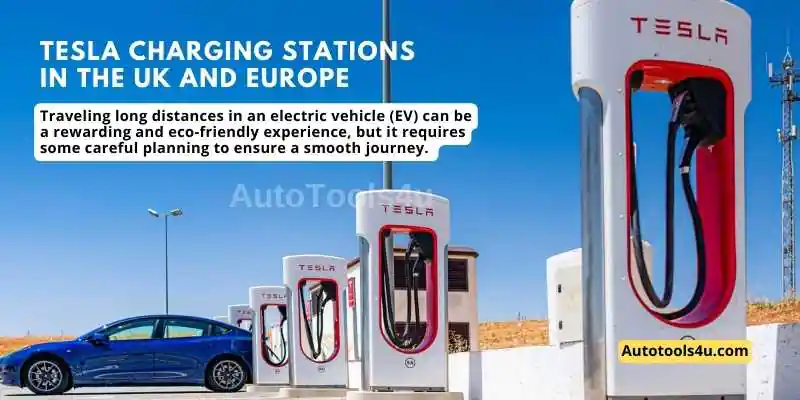In an era marked by an increasing global emphasis on sustainability and environmental consciousness, the automotive industry is undergoing a profound transformation. Electric vehicles (EVs) have emerged as a powerful solution, promising cleaner and greener transportation for the future. As these eco-friendly automobiles gain traction, one critical aspect takes center stage in shaping the success of this transition, EV charging infrastructure. This blog endeavors to delve into the pivotal role this technological backbone plays in revolutionizing the way we drive and the positive impact it has on our planet. From innovative advancements to challenges and opportunities, this comprehensive exploration sheds light on how the world is embracing a new era of mobility, empowering us to envision a future where sustainable transportation is within reach for all.
Electric vehicles (EVs) are one of the hottest topics in the auto industry right now. Countries around the world are encouraging people to buy electric cars by establishing charging infrastructure and offering incentives like tax benefits. However, India still lags when it comes to EV charging infrastructure. In this article, we will discuss how different countries have been dealing with this problem and what we can learn from them when it comes to developing our own solutions for EV charging infrastructure
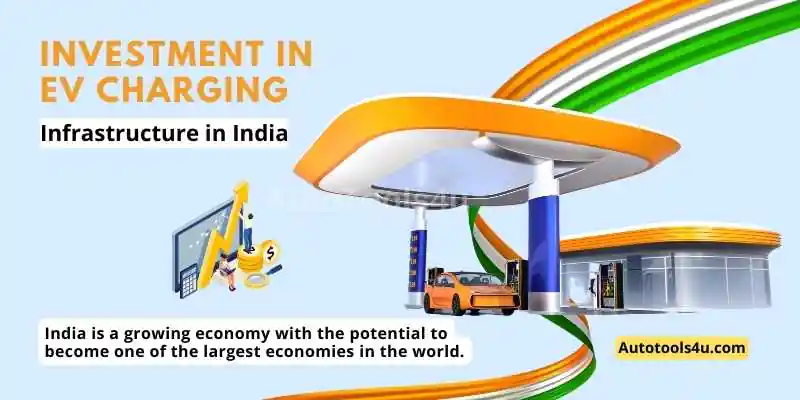
Investment in EV Charging infrastructure in India
India is a growing economy with the potential to become one of the largest economies in the world. The government of India has invested in creating an EV Charging infrastructure across the country. The Indian government has planned to spend more than 1 lakh crore rupees ($14.5 billion) on developing a charging network for electric vehicles by 2025, according to Ministry of Electronics and Information Technology documents.
This is a significant investment by any standard and will help India move towards cleaner transportation options while also creating thousands of jobs in this sector. This shift towards electric vehicles will be beneficial for both people who live in urban areas as well as those living in rural areas because it will reduce air pollution which has been identified as one of India’s biggest health concerns today.
Charging Infrastructure in the UK
In the UK, there are more than 40,000 electric vehicle charging points. In addition to that, the government is investing millions in charging infrastructure and tax subsidies on the purchase of electric vehicles.
The UK has witnessed a significant expansion of its EV charging infrastructure network in recent years. From public charging points strategically located in urban areas to rapid chargers along highways, the country has taken bold steps to facilitate EV adoption and alleviate range anxiety. Private companies, local authorities, and charging point operators have been actively engaged in deploying charging infrastructure to meet the growing demand from EV owners. Additionally, innovative charging technologies and smart grid integration have been explored to ensure a seamless and efficient charging experience.
UK Government Investment Pledges
Recognizing the critical role of EV charging infrastructure in realizing a cleaner transport ecosystem, the UK government has made substantial financial commitments to accelerate its development. Through various initiatives and funding programs, the government has pledged significant investment to support the expansion and accessibility of EV charging points across the nation. These investments aim to address concerns about charging availability, encourage EV adoption, and bolster the overall transition to a low-carbon transport system.
Additionally, financial incentives were provided to businesses and local authorities to install charging points at key locations, such as retail centers and public parking spaces, making charging more convenient and accessible for EV users.
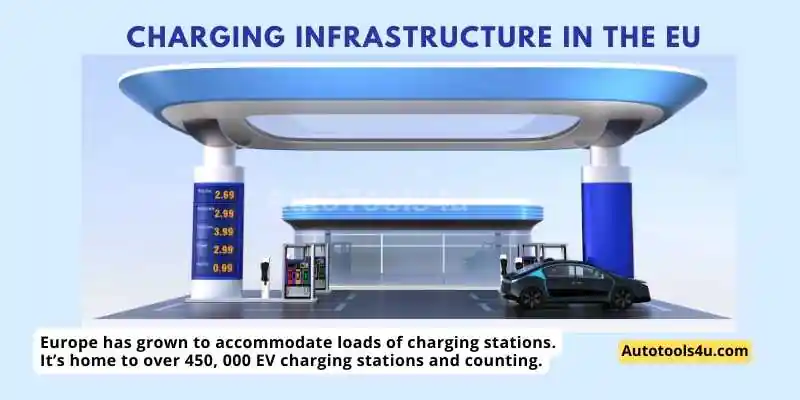
Charging Infrastructure in the EU
Europe has grown to accommodate loads of charging stations. It’s home to over 450, 000 EV charging stations and counting. EU is one of the key regions in paving the way for a cleaner future with EVs, so it makes sense that they have plenty of charging infrastructure available. And as EVs become more and more popular, Europe’s electric vehicle infrastructure continues to grow steadily by the month.
But this isn’t just good news for Europeans—many European countries have been working on building out their own EV charging networks specifically designed to support visitors who are driving through their territory or stopping over for the night on long trips across several countries at once similar to high traffic routes such as channels traffic, those drivers traveling between London and Calais.
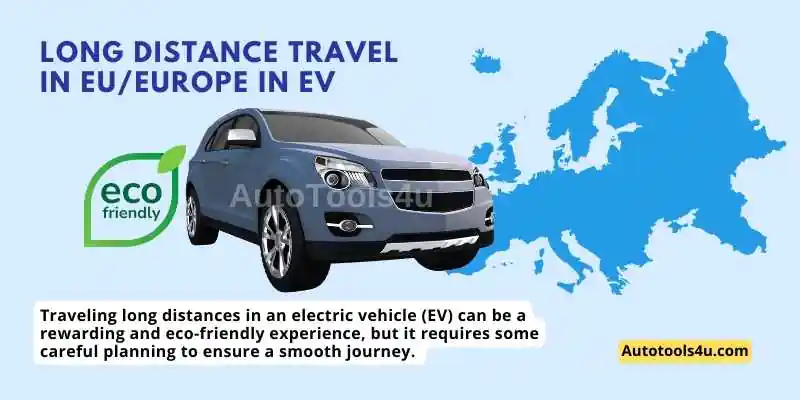
Long Distance Travel in EU/Europe in EV
Traveling long distances in an electric vehicle (EV) can be a rewarding and eco-friendly experience, but it requires some careful planning to ensure a smooth journey. Before embarking on a long-distance trip in an EV across Europe, consider the following key considerations:
Charging Infrastructure
Research and plan your route around the availability of charging stations. Check for public charging points along the way and at your destination. Numerous apps and websites can help you find charging stations, indicating their types, availability, and compatibility with your EV model.
Charging Speeds
Different charging stations offer varying charging speeds. Know the types of chargers (e.g., Level 1, Level 2, DC fast chargers) and their charging rates. DC fast chargers are faster than Level 2 chargers and are more suitable for long-distance travel.
Route Planning
Plan your route carefully, taking into account the distances between charging stations and potential detours. Factor in charging time at each stop to estimate your total travel time accurately.
Range and Efficiency
Be aware of your EV’s range capabilities and how driving habits, weather, and terrain can affect efficiency. Consider factors like speed limits, traffic conditions, and driving style to optimize range.
Emergency Charging Plan
Have a contingency plan in case you encounter charging issues or station unavailability. Know nearby alternative charging stations or amenities that might help in case of unexpected charging delays.
Adapters and Cables
Depending on the countries you’ll be traveling through, you might need different charging adapters. Ensure you have the necessary cables and adapters to connect to various charging stations.
Regulations and Restrictions
Familiarize yourself with EV-specific regulations and restrictions in the countries you’ll be visiting. Some cities may have specific rules for EVs, and you’ll need to comply with local policies.
Language and Apps
Brush up on basic phrases or have translation apps handy, as you may encounter different languages during your journey. Also, install relevant apps for EV charging, navigation, and language translation to make your trip smoother.
Climate and Weather
Consider the weather conditions along your route, as extreme temperatures can impact battery performance and range.
Accommodation
If your trip includes overnight stays, choose accommodations with EV charging facilities or nearby charging stations.
Membership and Access
Some charging networks may require memberships or special access cards. Check if you need to register in advance or if your existing network memberships cover charging in the countries you plan to visit.
Rapid EV Chargers infrastructure in the UK and EU
Rapid EV Chargers are the fastest chargers currently available. This kind of charger can charge an EV in about 30 minutes, depending on the power and speed of the charging stations.
Rapid EV chargers play a pivotal role in advancing electric mobility in both the UK and Europe. These high-power charging stations are designed to significantly reduce charging times, making long-distance travel in electric vehicles more feasible and convenient. Here are some key points about rapid EV charger infrastructure in the UK and Europe:
Power Levels
Rapid EV chargers come in different power levels, typically classified as 50 kW, 100 kW, and even higher. Advanced chargers with power outputs exceeding 150 kW or 350 kW are being deployed, promising even faster charging times and further facilitating long-distance travel.
Innovative Charging Solutions
Alongside traditional fast chargers, innovative solutions like ultra-rapid chargers and battery-swapping stations are being explored. Ultra-rapid chargers can deliver higher power levels, enabling a significant boost in charging speed. Battery swapping stations offer the potential to exchange depleted EV batteries for fully charged ones, minimizing charging times.
High-Speed Charging Technology
Rapid EV chargers, also known as DC fast chargers, utilize direct current to deliver a higher charging rate compared to standard AC chargers. These chargers are capable of providing a substantial amount of electric power to the vehicle’s battery in a short period, significantly reducing charging times.
Expanding Network
The UK and Europe have been actively investing in rapidly expanding their network of fast chargers. This expansion is a response to the growing adoption of electric vehicles and aims to address the range anxiety concerns of EV owners, encouraging more people to switch to electric mobility.
Strategic Locations
Rapid EV chargers are strategically located along major highways, busy urban centers, and popular tourist destinations. The emphasis is on providing accessibility and convenience for long-distance travel, making it easier for EV drivers to plan intercity journeys without worrying about extended charging stops.
Interoperability
Efforts have been made to ensure cross-network compatibility and seamless user experiences across different charging providers. Interoperability standards enable EV drivers to access and use rapid chargers regardless of their membership or charging network affiliation, simplifying the charging process.
Tesla charging stations in the UK and Europe
Tesla has been steadily expanding its charging station infrastructure in the UK and Europe. The Tesla Supercharger network, specifically designed for Tesla electric vehicles, plays a crucial role in facilitating long-distance travel and enhancing the overall charging experience for Tesla owners.
Cross-Country Travel
With the extensive coverage of Superchargers across the UK and Europe, Tesla drivers can plan cross-country trips with confidence, knowing they have access to a reliable network of fast chargers along their routes.
Integration with Navigation System
Tesla’s built-in navigation system includes real-time Supercharger availability and routing, allowing drivers to plan their trips efficiently. The system suggests optimal charging stops and displays real-time information about charger availability at each location.
Supercharger Network
Tesla’s Supercharger network consists of high-speed DC fast charging stations, exclusively designed for Tesla electric vehicles. These chargers offer significantly faster charging rates compared to standard Level 2 chargers, allowing Tesla drivers to replenish a substantial amount of range in a relatively short time.
Strategic Locations
Tesla Superchargers are strategically located along major highways and popular travel routes, enabling Tesla owners to travel long distances with ease. The charging stations are often situated near amenities such as restaurants, shopping centers, and rest areas, making the charging experience more convenient and enjoyable.
V3 Superchargers
Tesla has been upgrading its Supercharger network to V3 Superchargers, which offer even faster charging speeds compared to previous versions. V3 Superchargers can deliver up to 250 kW of power, reducing charging times significantly and optimizing the overall journey. There has been already a plan in place to upgrade to V4 super chargers soon.
Charging Speed Management
Tesla vehicles have advanced charging speed management features that automatically adjust charging rates to optimize battery health and lifespan. This ensures that the battery is charged at an optimal rate during each charging session.
Charging Costs
Tesla’s Supercharger network typically operates on a pay-per-use basis, with charging costs varying based on location and the country’s electricity rates. With some Tesla older models deals, you may even get to charge your car for free for life!
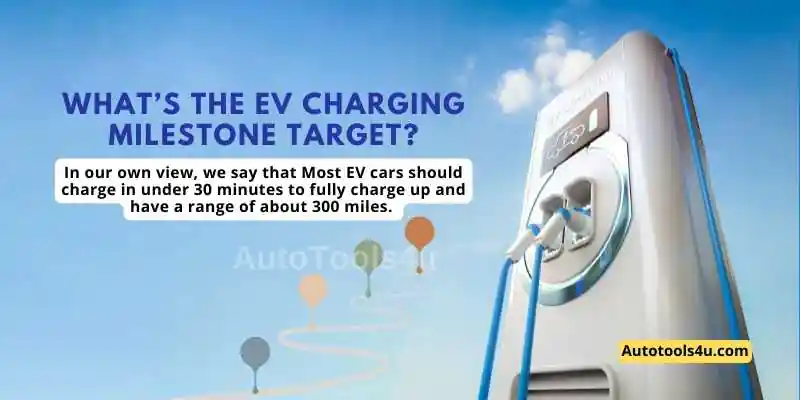
What’s the EV Charging Milestone target?
In our own view, we say that Most EV cars should charge in under 30 minutes to fully charge up and have a range of about 300 miles. Some high-end cars are getting close to this margin however this target remains elusive for most EVs in the market as of now and makes cross-country long travels in EVs slightly more challenging if not difficult!
